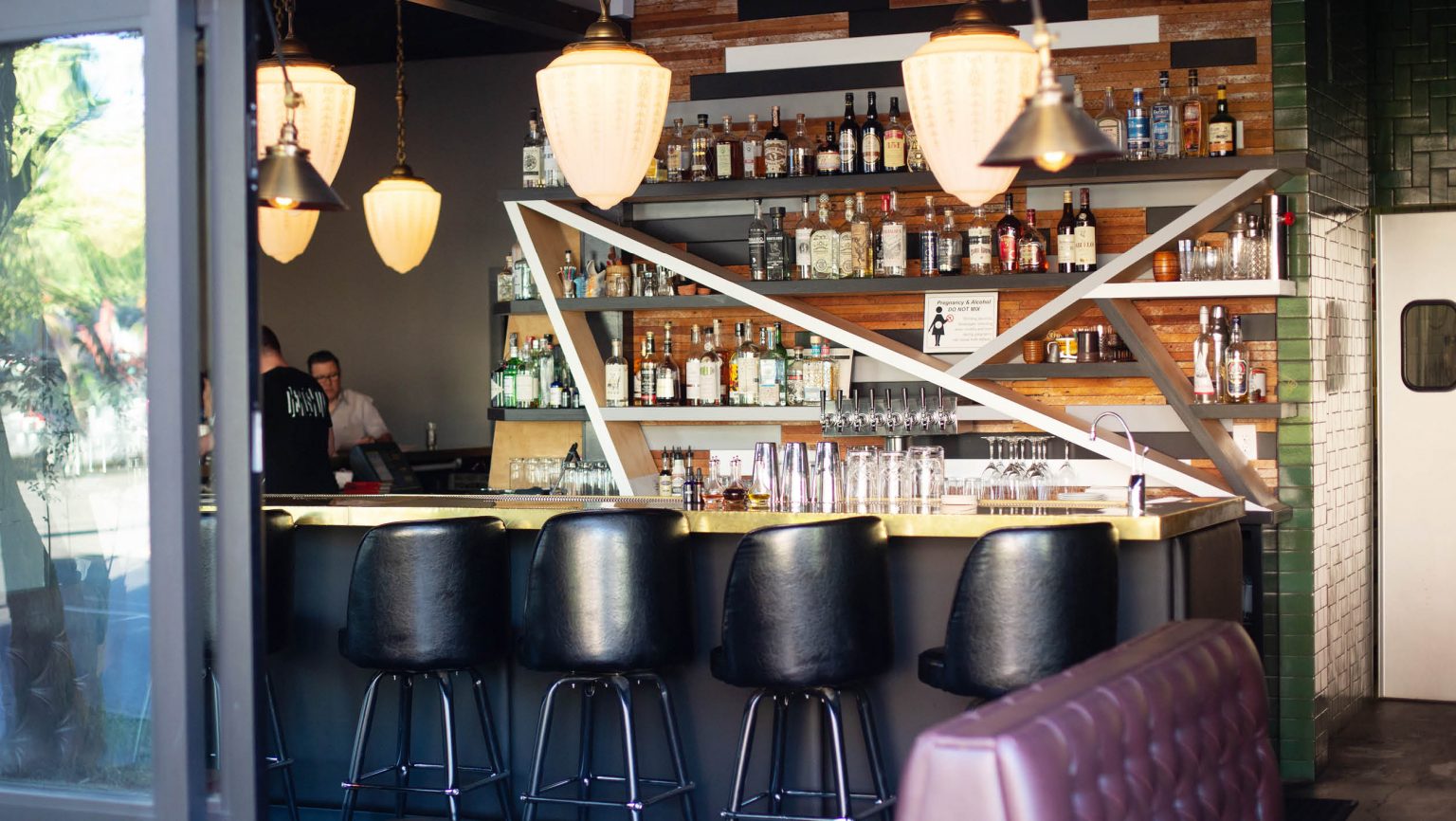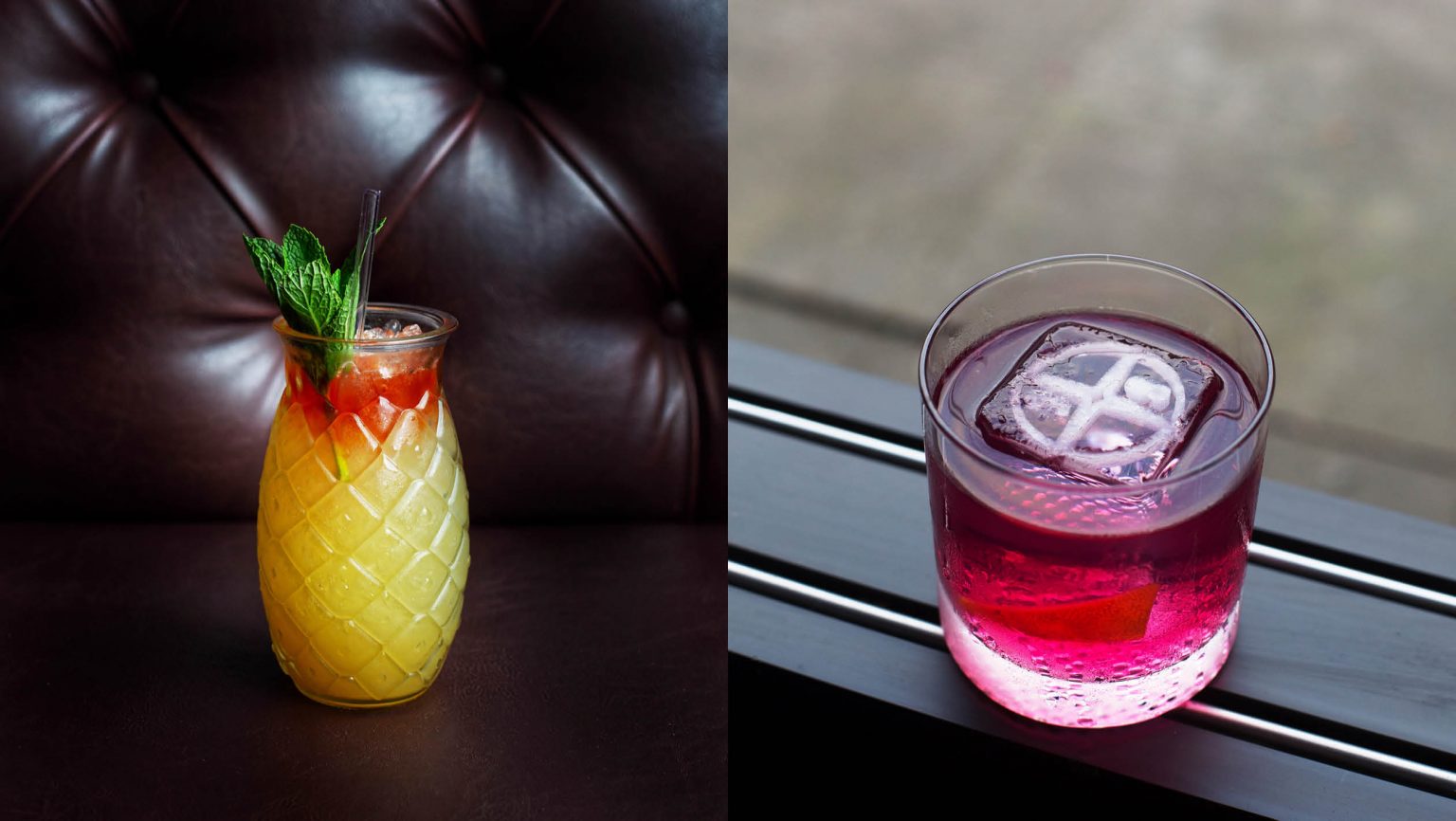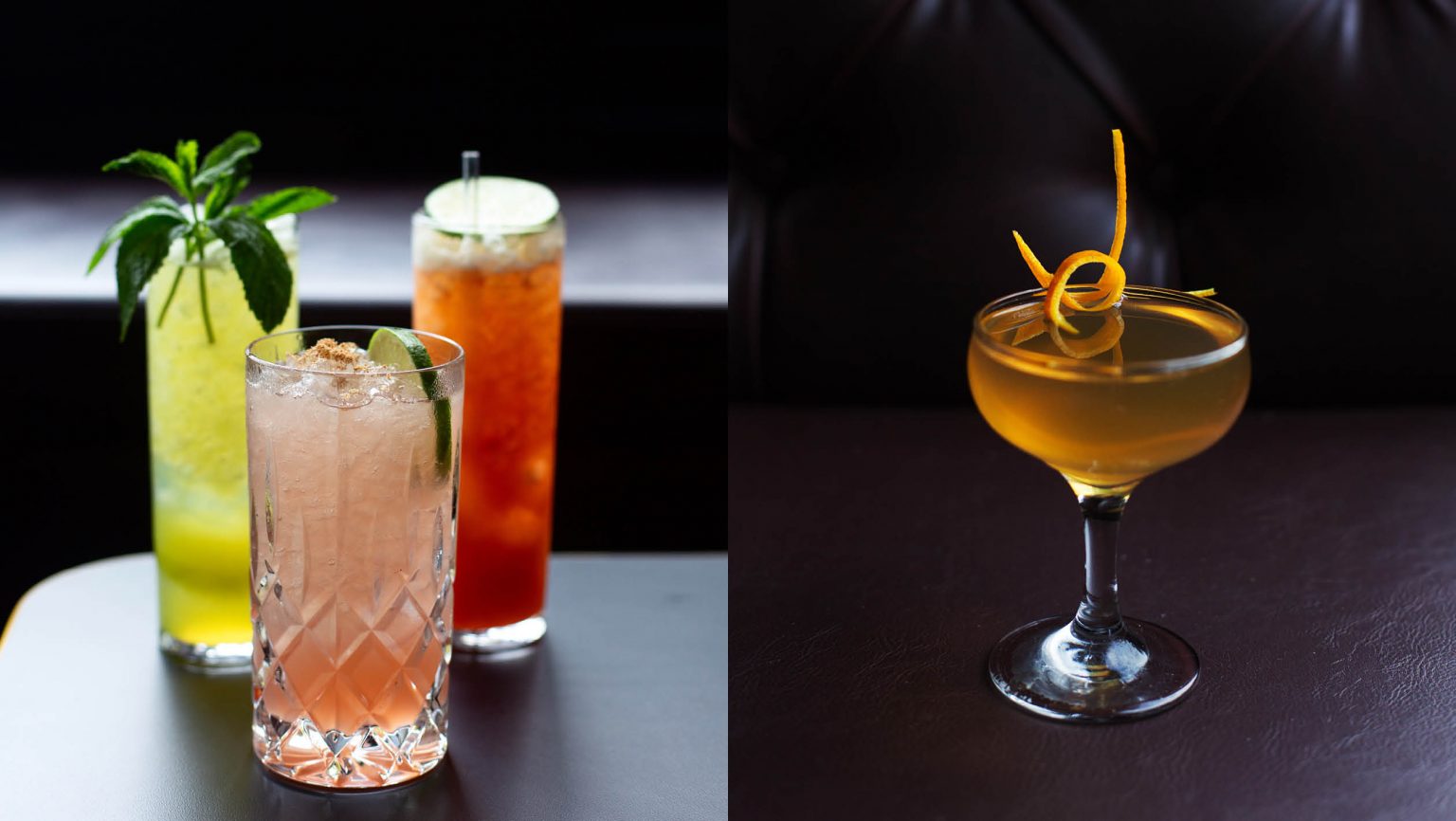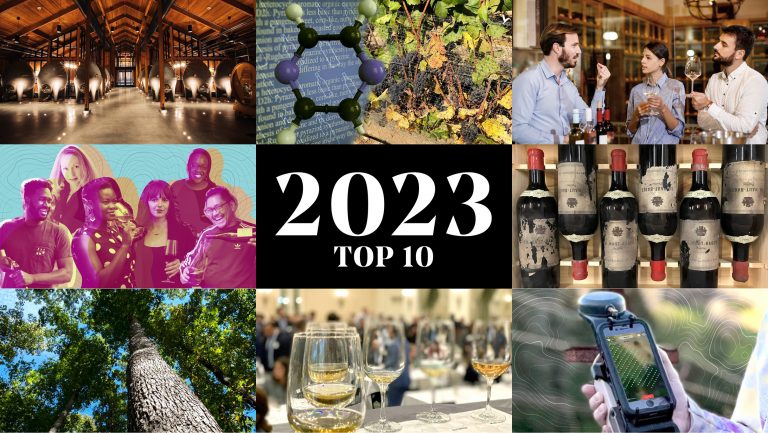It was nearly a decade ago when Adam Robinson, a former NBC video editor then working front of house at David Chang’s Momofuku Ssäm Bar, decided he’d had enough of the New York City grind. “I grew up in a small town,” he says. “I wanted to leave New York for a city that was passionate about food and drink but wasn’t big like San Francisco or Los Angeles.”
He picked Portland, Oregon, a place he’d fallen for on an earlier visit because of its warm personality and impressive restaurant and bar culture. Robinson quickly became a fixture of the city’s cocktail scene, first as a bartender at chef-owner Scott Dolich’s Park Kitchen in the Pearl District, and later at the now-shuttered Bent Brick, Kyle Webster and Naomi Pomeroy’s Expatriate, and the tropical-inspired Rum Club.
These days he’s in Southeast Portland running Deadshot, a cocktail bar with an industrial vibe and some 50 seats, which he opened in May. He introduced the concept to Portlanders in 2016 through a Monday night–only pop-up of the same name. Deadshot—the name is a nod to marksmanship, underscoring the bar’s devotion to “hitting the mark and executing what we do well”—is separated by a pocket door from Holdfast, the culinary domain of Robinson’s partners, Will Preisch and Joel Stocks.

Don’t miss the latest drinks industry news and insights. Sign up for our award-winning newsletters and get insider intel, resources, and trends delivered to your inbox every week.
Like Deadshot, Holdfast launched in 2013 as a pop-up. The edgy fine-dining supper club currently whips up its multicourse dinners in the adjacent space, which opened in June. But although the partners, who first worked together at Park Kitchen, may now be operating out of permanent spaces, the experimental spirit that fueled their pop-ups is as robust as ever.
The Collaboration
Preisch and Stocks wanted a spot where anyone could drop in. “Holdfast’s seatings are limited,” says Stocks, “and you often have to plan your reservation weeks in advance. Not everyone wants to do that all the time, and we want to be able to reach as many people as we can.” He and Preisch wanted another, more casual platform to showcase their food.
Having worked closely with Robinson before, Stocks says that he and Preisch knew Robinson was the ideal person to lead the bar venture because of his ingredient-driven approach to cocktails, an approach that mirrored what they hoped they were accomplishing in Holdfast’s kitchen.
Holdfast offers a tasting menu of dishes like halibut, nasturtium, and squash, and mussels with spring onion and vermouth, served in a relaxed, convivial dinner party setting. Diners who don’t want to shell out $140 for such an experience, however, need only rove over to Deadshot to savor a more casual sampling of Stocks and Preisch’s cooking. Holdfast staples like cornbread madeleines and steamed brown bread are always on the menu at Deadshot.
Synergy between the restaurant and bar has been organic. Some customers might wander into Deadshot for an aperitif before their Holdfast feast; others make their way in for a postprandial nightcap.
The Space
Both the Deadshot and Holdfast spaces were designed by Mark Annen, a local architect, and Les Foster of OBD Custom, a firm focused on custom fabrication, installations, and design. While markedly different, the spaces share connecting elements, like leather and wood, dark green accents, and massive wall murals.
For Deadshot, Foster crafted a number of custom pieces, such as the geometric installation of white, black, and gray appliqués set into an existing wall to bring a “crisp finish” to the bar. Backbar shelving that features pronounced angles was fabricated with two layers of strong, functional one-inch hardwood plywood. The door, says Foster, is more than just a utilitarian divider.
“On the Deadshot side [of the door],” he says, “I repurposed the existing lathe materials from the original walls and mirrored the black, white, and gray from the bar walls. Holdfast’s side of the door is clad with calico hickory–veneered paneling, which gives it a subtle Scandinavian lodge feel. Deadshot is all enamel and engineered materials, while Holdfast utilizes natural wood and tonal finishes.”
The Cocktails
Robinson’s cocktail menu is purposely vague, a mere listing of one-word ingredients, devoid of brand names, drink style, or glassware. It’s designed to unleash patrons’ imaginations. Says Robinson, “I don’t want them to know exactly what they’re going to get.”
Some of those ingredients, bitter melon and tarragon among them, are surprising, but for the globe-trotting Robinson, who spent nearly two years in Asia before starting Deadshot, mainly working behind the bar at the Taipei speakeasy Ounce, they’re an expression of his travels. “I like drinks that are reminiscent of classics but are just a bit different because of one technique or ingredient,” says Robinson, who points to his affinity for tools like the centrifuge. “We don’t take ourselves too seriously, but we geek out and do unique things.”
The result is that nothing is exactly what it seems at Deadshot. Take the Diplomatic Prince, a reinterpreted Negroni that weaves in cabbage, or the Jack Nance, a whiskey concoction “that sounds like a salad dressing,” says Robinson, with its mélange of egg yolk, sesame, mustard, sherry, and lemon. The transparent Crystal Daiquiri, a blend of three different rums, is blended with clarified lime “so it looks like a glass of water,” says Robinson. “But then you taste it and you get the citrus and sugar. We’re programmed to think something clear has no flavor, so this is something you don’t expect at all.”
Another innovative Deadshot favorite is the Tranquilizer. Its simple menu description of rums, pineapple, coconut, orange, and nutmeg suggests a refined Painkiller. But there’s more to the ingredients list than meets the eye. The coconut, for example, refers to fat-washed rum, and the orange to oil and bitters. Reading the list, guests might think a refreshing, juicy cooler will soon be coming their way, but when it arrives in a coupe, the result, says Robinson, is “more like a Martini or a Manhattan.”
Deadshot’s cocktails are modern and inventive, and echo Holdfast’s food, but there are plenty of solid options for those who crave more straightforward libations, whether it’s Rainier on tap, a glass of Vía de la Plata Brut Nature Cava, or a $7 pickled-ramp Gibson during the seven-day-a-week happy hour from 4 to 6 pm.
“We’re in a residential neighborhood,” Robinson points out. “It’s important that there’s something for everyone.” For many of the locals who walk in off the street, though, Deadshot is an adventure they didn’t know they wanted to go on.

Dispatch
Sign up for our award-winning newsletter
Don’t miss the latest drinks industry news and insights—delivered to your inbox every week.
Alia Akkam is a writer who covers food, drink, travel, and design. She is the author of Behind the Bar: 50 Cocktails from the World’s Most Iconic Hotels (Hardie Grant) and her work has appeared in Architecturaldigest.com, Dwell.com, Penta, Vogue.com, BBC, Playboy, and Taste, among others, and she is a former editor at Edible Queens, Hospitality Design, and Beverage Media. A native New Yorker, Alia now calls Budapest home. Follow Alia @behdria.










